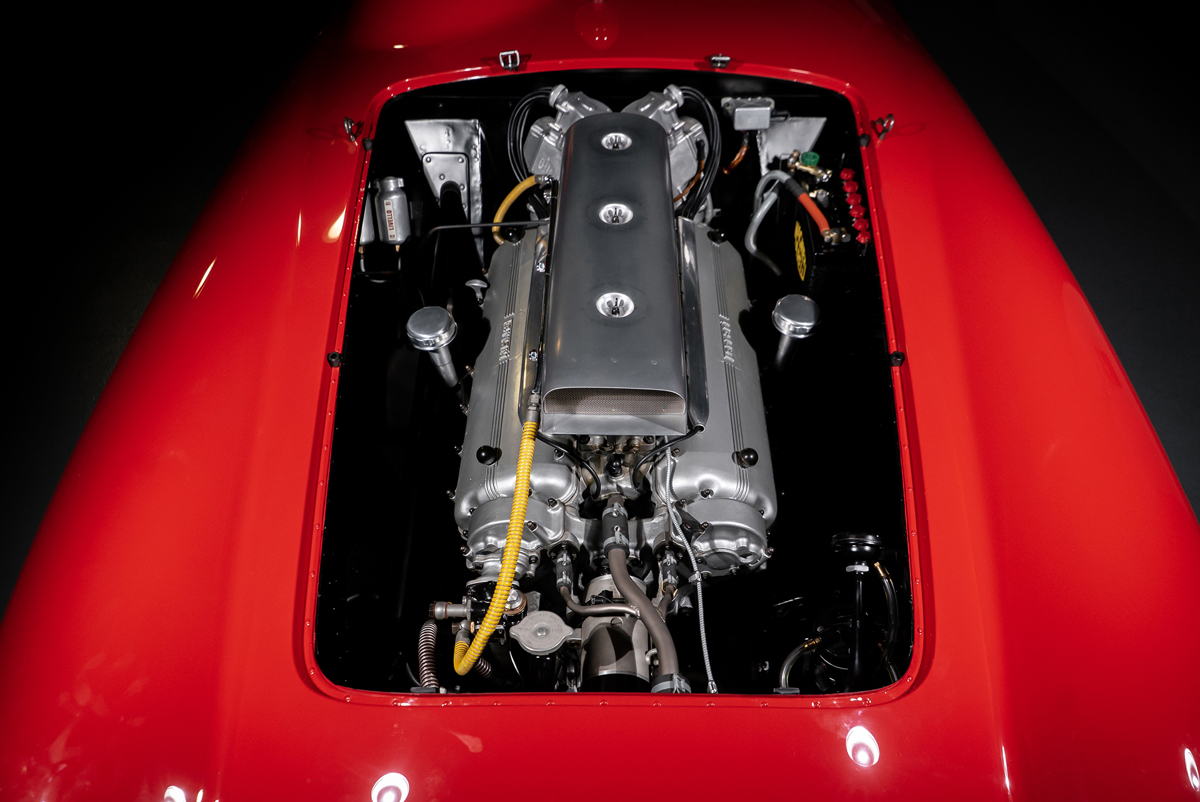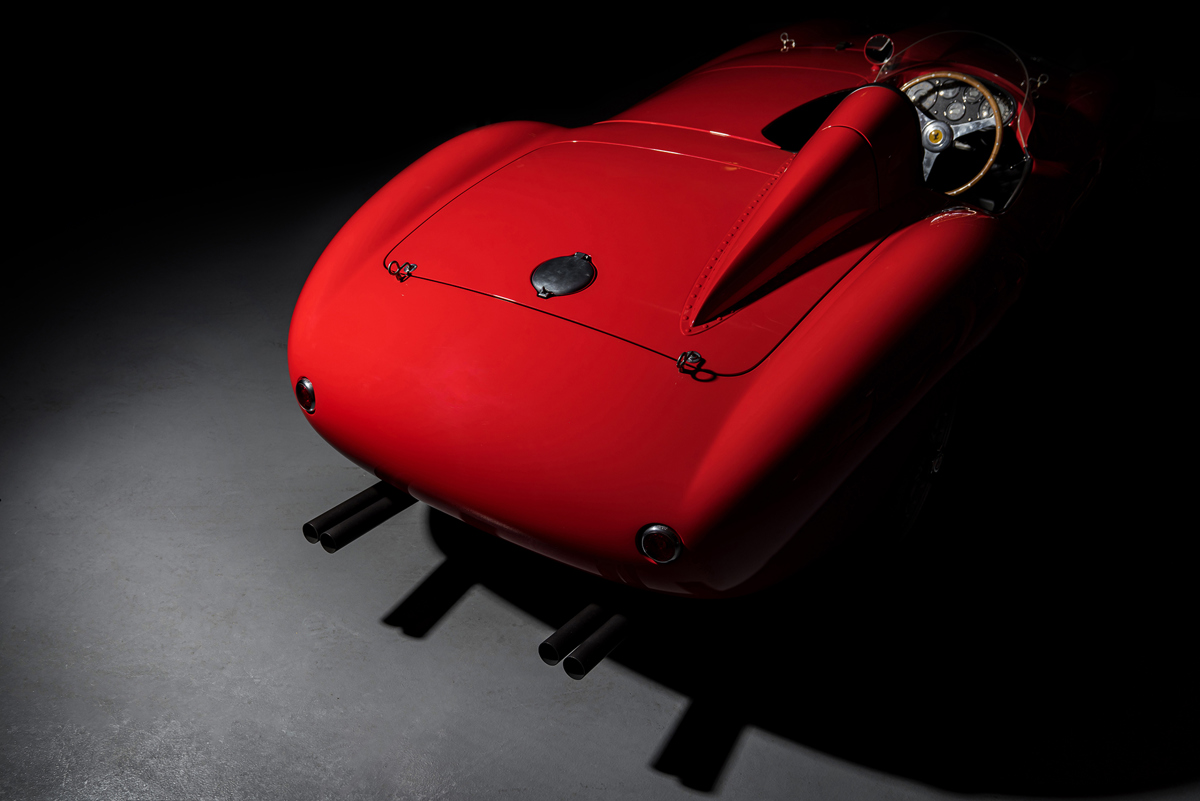There are few more evocative series in the history of competitive motorsport than the World Sportscar Championship. Born in 1953, the series represented a whistle-stop tour of the world’s most exciting, challenging, and grueling endurance events; a veritable cornucopia of now legendary road courses, the names of which remain etched in the minds of race fans long after the smell of unburnt petrol and sizzling rubber have given way to sepia-tinted snapshots and aging black and white photographs.
The nostalgic memories of this unforgettable series are still powerful today, inspiring collectors to spend lifetimes attempting to source these sporting models. Pulled in part from one of these renowned collectors, Oscar Davis, RM Sotheby’s 2022 Monterey offering goes straight to the heart of this incredible period of motorsport, beginning with the earliest days of the World Sportscar Championship, or WSC. Over the next few weeks, we will explore the WSC in depth, with hard-to-find highlights all available for auction this August. The inaugural year of the series proved dominant for Ferrari, with an early win at the second race of the championship—the grueling Mille Miglia—delivered by Giannino Marzotto at the wheel of one of four 340 MM Vignale Spiders. But it was the more muscular 375 MM, which won everywhere from Pescara to Casablanca, that brought home the title for Ferrari, with dominant wins at the 24 Hours de Spa and Nürburgring 1000 km courtesy of Giuseppe Farina, Mike Hawthorn, and Alberto Ascari:
1953 Ferrari 375 MM Spider by Scaglietti
Estimate: $8,000,000 - $10,000,000 USD
The 375 MM was in many ways an evolution of the 340 MM that had been so successful in period endurance racing. Indeed, four of the 26 cars built between 1953 and 1955 were converted from its predecessor, with the remainder sharing the same Tipo 102 tubular chassis, albeit with a stretched wheelbase. Powered by a 4.5-litre, V-12 engine derived from the Scuderia’s 375 Grand Prix car, the lightweight machines were capable of producing 335 horsepower, giving them the legs to lead the field even on the most punishing events and in adverse conditions.
The 375 MM was in many ways an evolution of the 340 MM that had been so successful in period endurance racing. Indeed, four of the 26 cars built between 1953 and 1955 were converted from its predecessor, with the remainder sharing the same Tipo 102 tubular chassis, albeit with a stretched wheelbase. Powered by a 4.5-litre, V-12 engine derived from the Scuderia’s 375 Grand Prix car, the lightweight machines were capable of producing 335 horsepower, giving them the legs to lead the field even on the most punishing events and in adverse conditions.
The race was ultimately won by Giuseppe Farina and Piero Scotti in the sister 375 MM, but Oliveira was able to redeem himself the following year, placing the car on pole and taking victory at the 9 Hours of Hedemora in Sweden. Chassis 0366 AM was crashed again at the 1954 Swedish Grand Prix, but the extensive damage presented Oliveira with an opportunity: following the accident, the car was shipped back to Italy, where it became the first of its type to wear coachwork by Scaglietti. It remains one of the most beautiful machines to contest the series.
Ferrari’s laser-focus on burnishing the marque’s crown with competition success paid dividends in 1954, with the Prancing Horse capturing its second consecutive title following victory for the 375 MM in Argentina, and it’s more powerful 375 Plus at La Sarthe and the Carrera Panamericana. Meanwhile, the four-banger 750 Monza pipped a brace of Lancia D24s at Dundrod during the RAC Tourist Trophy to fly the flag for Ferrari in the lower classes.
Following a dominant start in the new series, the Italian marque’s fortunes took a turn in 1955 during a season that would be marred by tragedy. Despite a strong start and a 14-point lead in the championship, Ferrari was admittedly outclassed when the calendar reached Europe, bringing with it the arrival of the fearsome Mercedes-Benz 300 SLR. The German manufacturer announced its presence in the World Sportscar Championship with an emphatic and historic victory at the Mille Miglia, where the English duo of Stirling Moss and Denis Jenkinson stormed to victory in the now immortalised ‘722’. However, just a few weeks later, Pierre Levegh’s three-pointed-star would infamously leave the track at La Sarthe, claiming countless lives and eventually causing Mercedes to withdraw from racing. Not soon enough for Ferrari: Moss duly delivered victory at Dundrod, sealing the championship for Mercedes-Benz by taking the checker at the Targa Florio, prior to the legendary SLR models being consigned to history.
Another casualty of the Le Mans disaster was the Carrera Panamericana, which was cancelled in the wake of events in France. The timing was awkward for Ferrari, which had just completed a brand-new sports racer built to emulate and exceed the 375 Plus’s success in the Mexican epic: The next subject of our series, the 1955 Ferrari 410 Sport Spider.
For more information on this specific 375 MM as well as an extensive set of images and historic documentation, please click here. Check back soon to catch the next iteration of our series on Modena-built marvels, all bound for Monterey 2022.









